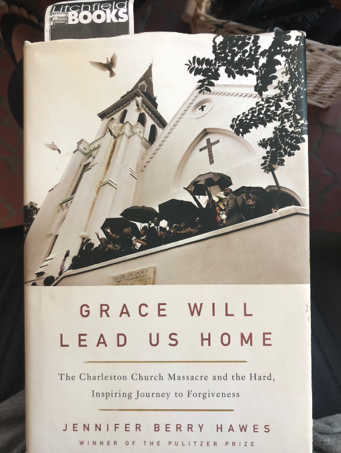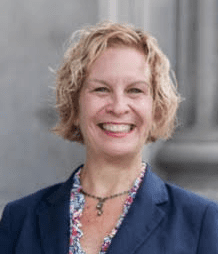Summer reading recommendation: “Grace Will Lead Us Home”
July 18, 2019By Reba Hull Campbell
One of the blessings of this retirement season of my life is having the chance to read more – light fiction, “good for you” nonfiction, magazines, blogs, professional journals, newpapers. You name it, I’ve got it in my reading que and typically have several reading stacks to pull from.
Several weeks ago, however, I put all my reading materials aside and spent two days on a single book, “Grace Will Lead Us Home” about the shootings at Mother Emanuel A.M.E. Church.
Sometimes a book hits you square between the eyes. This was one of them.
 Rarely does a book appeal to all my “reading” senses – well written, important message, compelling story and human connections. This was one of them.
Rarely does a book appeal to all my “reading” senses – well written, important message, compelling story and human connections. This was one of them.
During a drive to the beach back in June, I listened to an interview on the SC Lede podcast on SC Public Radio with the author of the book, Jennifer Berry Hawes. She’s a reporter for the Post and Courier who witnessed first-hand many of the details surrounding this tragedy.
When I first heard of “Grace Will Lead Us Home” a few weeks earlier, I put it on my reading list thinking it may be hard to find in Columbia. I assumed it had been published for local distribution in the Charleston area by the Post and Courier to showcase the paper’s coverage during and after the tragedy.
After hearing Hawes’ podcast interview and discovering the book was easily available in bookstores, I knew I had to read it. And I knew I had to buy it and not just borrow it from the library or listen on Audible. I had a feeling it would be one of those books I’d want to mark up and re-read.
I rarely buy hardback books anymore, but when I do, it’s from an independent bookseller. As luck would have it the day I heard the podcast on my ride to the beach, I made my usual stop at Litchfield Books to treat myself to a nice beach read. I immediately saw “Grace Will Lead Us Home” on the table just inside the door. I picked it up and headed straight to the checkout counter not even looking at the new fiction books that filled my beach reading list.
Once I got started on the book, I just couldn’t stop. For anyone who thinks they have an understanding of the facts, the emotions, the complexities or the passions surrounding the shooting, the trial and the its aftershocks, this book illustrates there’s far more to this story than just an accounting of facts in a series of news reports.
I was fully expecting this book to be written in the style of a reporter – all facts, little emotion, neutral descriptions that would pass a newspaper editor’s muster. That’s not the case at all. The best way I can describe the book is the intersection of excellent journalism and passionate, purposeful storytelling. I later learned that Hawes had won a Pulitzer Prize, so I shouldn’t have been surprised at the elegance of her writing in this book.
What I discovered before I finished even the first two pages was a beautifully written story about an unimaginable human tragedy that affected people in ways we can’t possibly understand without being part of the story. That’s where Hawes’ writing comes in. She doesn’t just tell the story – she gently carries us into the story with a respectful, yet deeply insightful, narrative. She masterfully weaves together the lives and stories of the many people involved, while at the same time balances the issue of race relations that always simmers just below the surface.
There’s a sense of chronology in the way Hawes tells the story. However, the narrative doesn’t always run in order of what happened, which could make the book confusing if the writer had less finesse in the art of storytelling.
When I read writing by an author whose work really grabs me, I like to mark up the pages and go back and read those lines over and over. This book is dog-eared with turned-down pages, numerous bookmarks and notes scribbled in the margins.
Here’s one of my favorite passages.
In describing how blacks and whites viewed differently efforts toward improving race relations as a result of the shooting, Hawes writes, “White people saw their gestures of unity as gracious and sincere, which they often were. But black people saw them as more akin to someone who writes a thank you note after dinner when they really should have offered to pay.” Think about it. What a vivid analogy to describe the situation.
I also loved her account of Gov. Haley’s visit with Felicia Sanders, one of the survivors. Hawes vividly describes the emotion of the occasion merging perspectives of everyone who was present. I felt I was sitting in the room with them as a respectful observer rather than a voyeur or third-party reader of a news story.
Hawes describes without judgment, yet with more than just a reporter’s detachment, how the church leaders at Emmanuel AME Church failed the survivors and victims’ families in several ways. Her descriptions are accurate and human-focused without being sappy or judgmental.
Hawes’ descriptions of the shooter’s family are humane but not accusatory. She digs into questions that anyone who had read anything about the shooter and his background would want to know. Yet she doesn’t sensationalize or hyperfocus on this part of the story.
She breaks down the complexities of the “forgiveness narrative” that started shortly after the shooting when several of the victims’ families made public statements offering forgiveness to the shooter. A reader can understand the individual stories of grace from various families’ “forgiveness narratives” to get past what Hawes called the “homogenous” descriptions that spread through the media.
There were a couple of things l learned from listening to the podcast interview before I read the book that made the story feel even more real and human than it would have if had I listened after I read it.
First was Hawes talking about her own personal connection to the story and how it impacted her family. One of these connections was the fact that her son’s school was across the street from Mother Emmanuel. In the podcast interview, she talked about personal “out of the blue” moments that grabbed her. One example was leaving her son at school and becoming overwhelmed with worry that something would happen – a worry that wouldn’t have crossed her mind before the shootings.
Second was how she described the history of race relations in South Carolina. On a personal level, I found the history lessons intertwined throughout the book forced me to examine my personal perspective on race. As she described the state of education in the 1970s and the “segregation academies” that dotted the state, I realized she was describing the school I attended. I had never heard the school referenced that way specifically, but found it jarring to hear those words used.
In the 1970s, I was in elementary school living in a world pretty well insulated from the racial conflicts of school desegregation taking place around me. At that point, I didn’t fully understand that we were smack dab in the middle of in an era that was shaping our state’s future. Hawes’ history lessons overlaid throughout the book helped me better understand my own perspectives and the state of race relations today.
This book is a rare convergence of straightforward reporting and empathetic storytelling that fully held my attention – twice. I just finished reading it for the second time. It will make you think, cry, examine your own biases and feel more empathy for your fellow humans. Read. This. Book.
After more than 35 years working in politics, communications, management, fundraising and government relations, Reba Hull Campbell is taking a gap year as a rookie retiree to figure out what she wants to be when she grows up. Reba is passionate about travel, writing, learning to play the uke and keyboard, and staying connected with old friends. Reba can be reached at [email protected], @rebahcampbell on Instagram and Twitter, or through her blog at http://bit.ly/RandomConnectPoints


















